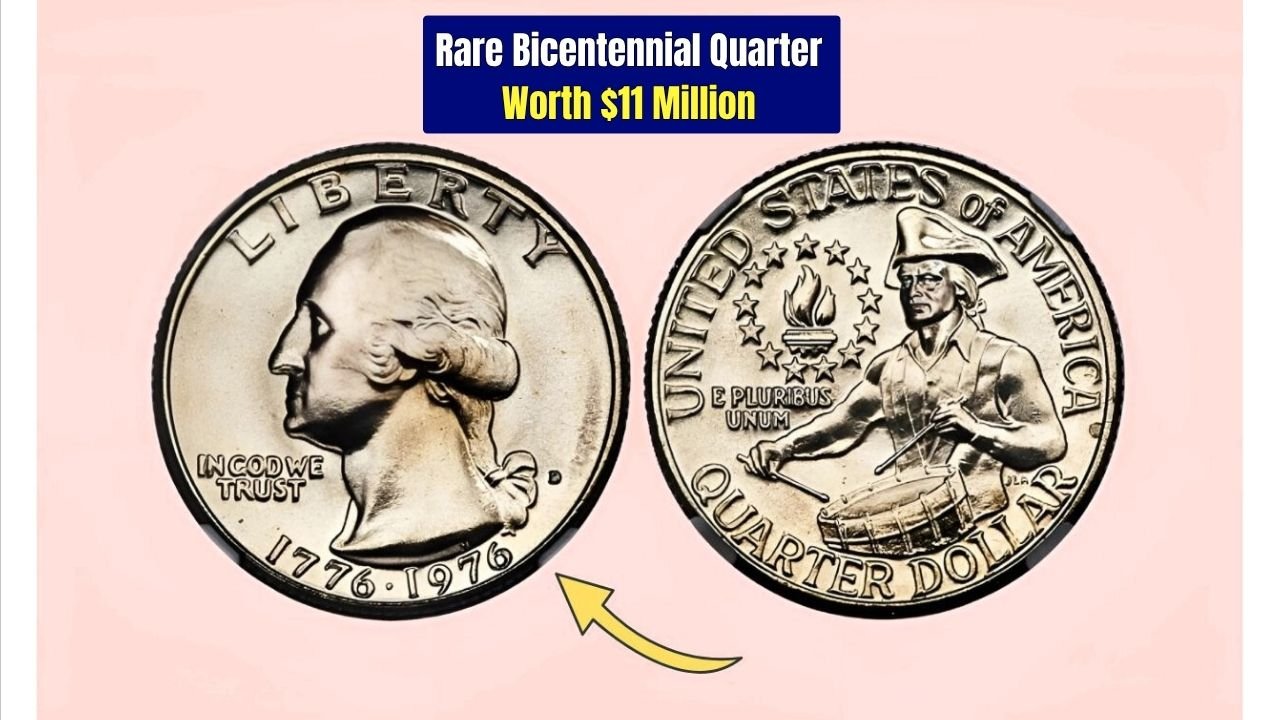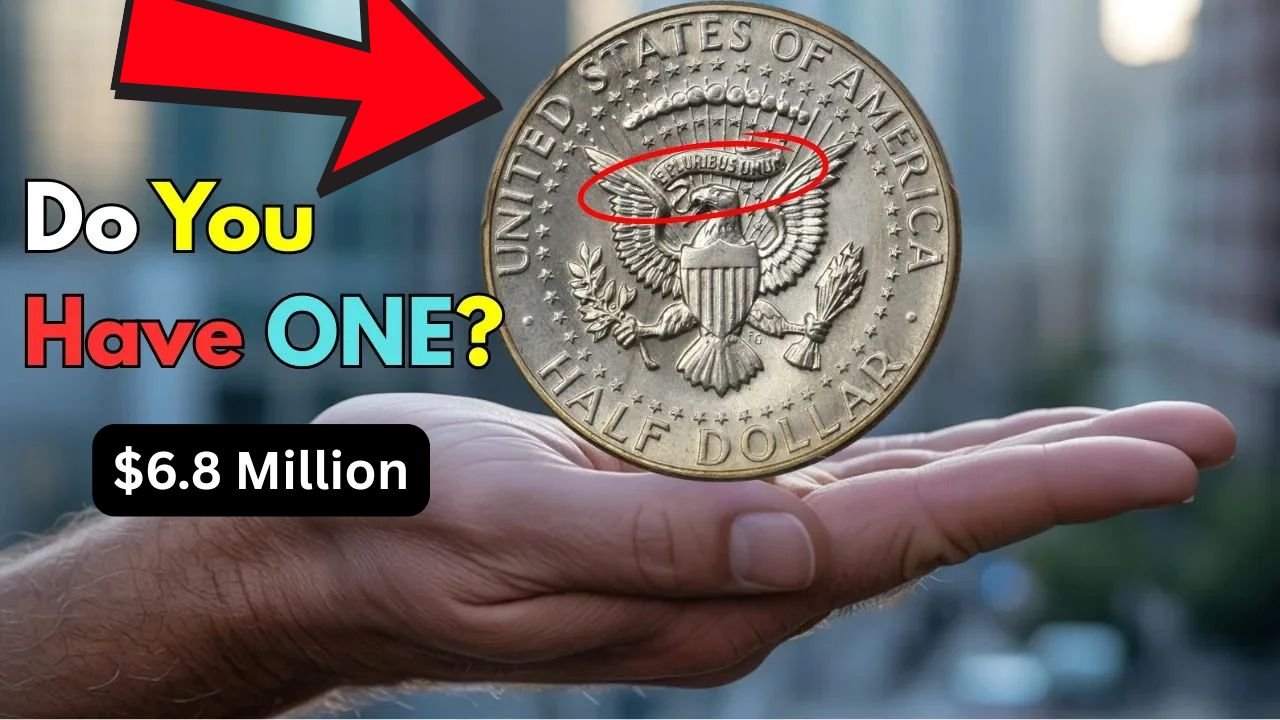Rare Bicentennial Quarter Worth $11 Million: In the world of coin collecting, surprises often come in small denominations. The latest buzz surrounds a rare Bicentennial Quarter from 1976, reportedly valued at a jaw-dropping $11 million. Even more astonishing, this high-value coin may still be circulating in everyday pocket change.
Could your next soda purchase include a slice of American numismatic history? Let’s dig into the story behind this coin, how it became so valuable, and what collectors — and everyday Americans — need to know to spot it.
What Is the Bicentennial Quarter?
The Bicentennial Quarter was minted in 1975 and 1976 to celebrate the 200th anniversary of American independence. These quarters are unique due to their dual date — “1776–1976” — and their special reverse design featuring a Colonial drummer, created by Jack L. Ahr.
Unlike typical quarters that show an eagle on the reverse, these feature the historic drummer with a torch of victory, making them instantly recognizable.
Quick Facts: Rare Bicentennial Quarter Worth $11 Million
| Feature | Detail |
|---|---|
| Year(s) Issued | 1975–1976 |
| Denomination | Quarter Dollar ($0.25) |
| Reverse Design | Colonial Drummer & Torch of Victory |
| Mint Marks | P, D, S |
| Special Versions | Proof, Silver Proof, Business Strike |
Why Is One Bicentennial Quarter Worth $11 Million?
Not all Bicentennial Quarters are valuable — in fact, most are worth between 25 cents and a couple of dollars depending on condition. So, what sets this $11 million quarter apart?
1. Rare Mint Error
The $11 million Bicentennial Quarter is believed to be a unique mint error, possibly struck on the wrong planchet (coin blank) or with double strikes. Experts believe it may have been accidentally minted on a silver dollar planchet, resulting in a slightly larger and heavier coin than usual.
2. Composition Anomaly
While some Bicentennial quarters were issued in 40% silver, this particular coin is rumored to have an unusual metallic composition or even an off-metal strike. Some reports suggest it may include pure silver or gold traces, increasing its value exponentially.
3. Condition: Mint State or Better
This quarter is said to be in “MS-68” condition, an exceptionally high grade on the Sheldon coin grading scale. Any coin in such pristine, uncirculated condition can command premium prices — and if it’s a one-of-a-kind error, the sky’s the limit.
Historical Sales of Rare Quarters
To understand why this coin could be worth $11 million, it’s helpful to look at previous sales of high-value quarters.
| Coin Type | Sale Price | Notable Feature |
|---|---|---|
| 1796 Draped Bust Quarter | $1.5 million | First year of quarter production |
| 1823/2 Overdate Capped Bust Quarter | $400,000+ | Rare overdate minting error |
| 1916 Standing Liberty Quarter | $400,000 | Extremely low mintage |
| 1976 Bicentennial Quarter (Error) | $11 million* | Unique error, exceptional condition |
*Value based on private collector reports and auction estimates.
Is It Really Still in Circulation?
The possibility that a multi-million-dollar quarter is still in general circulation has sparked a frenzy among Americans, especially coin collectors and treasure hunters.
Experts say it is entirely possible the coin went unnoticed for decades. It may have been mistakenly used in a transaction or kept in someone’s coin jar for years before resurfacing.
“The U.S. Mint produced hundreds of millions of Bicentennial quarters. A rare misstrike could have easily slipped through unnoticed — especially in the 1970s before modern quality control methods,” says numismatic expert James Halvorsen of the American Numismatic Association.
How to Identify the $11 Million Bicentennial Quarter
Here’s what to look for when inspecting your spare change:
Key Characteristics
- Dual Date “1776–1976”
Regular Bicentennial Quarters all share this feature. - Drummer Boy Reverse
Colonial drummer with torch of victory. - No Obvious Wear
Mint condition (MS-65 or better). - Off Metal or Unusual Weight
Use a precise scale. Standard quarters weigh 5.67 grams. Anything heavier may indicate a wrong planchet. - Striking Errors
Look for doubled images, misalignments, or planchet defects. - No Mint Mark or Rare Mint Mark
Coins struck without a mint mark (Philadelphia) or with obscure errors may be rarer.
What To Do If You Think You Have It
If you believe you’ve stumbled upon a rare Bicentennial Quarter, do not attempt to clean or alter it. This can significantly decrease its value.
Recommended Steps:
- Weigh the Coin: Use a digital gram scale.
- Visual Inspection: Use a magnifier to detect striking errors.
- Seek Professional Grading: Submit the coin to PCGS (Professional Coin Grading Service) or NGC (Numismatic Guaranty Company).
- Consult Coin Dealers: Reputable dealers or auction houses can give a valuation.
The Coin Collecting Boom in the U.S.
Coin collecting is experiencing a renewed boom in the U.S., especially among millennials and Gen Z collectors. TikTok and YouTube videos of rare coins selling for millions have fueled interest.
Search trends on Google have seen a 140% increase in queries like “valuable quarters in circulation” and “how to tell if a quarter is rare” in the past 12 months.
According to a 2024 report by the U.S. Mint, approximately 1 in 50 Americans now actively check their change for collectible coins.
FAQs – Rare Bicentennial Quarter Worth $11 Million
Q1. Are all Bicentennial Quarters valuable?
No. Most are worth between $0.25 and $2. Only rare errors or those in mint condition can be worth more.
Q2. How many Bicentennial Quarters were made?
Over 1.6 billion were struck — 809 million in Philadelphia, 860 million in Denver, and millions of proof and silver versions in San Francisco.
Q3. What makes a Bicentennial Quarter rare?
Minting errors, off-metal strikes, and unusually high grades (MS-68 or higher) make certain quarters rare and highly valuable.
Q4. Can I still find rare quarters in my pocket change?
Yes, it’s rare but possible. Some valuable coins, like this rumored $11 million quarter, may still circulate undetected.
Q5. What should I do if I think I found a rare coin?
Handle it carefully, don’t clean it, and get it appraised by professionals like PCGS or NGC.





